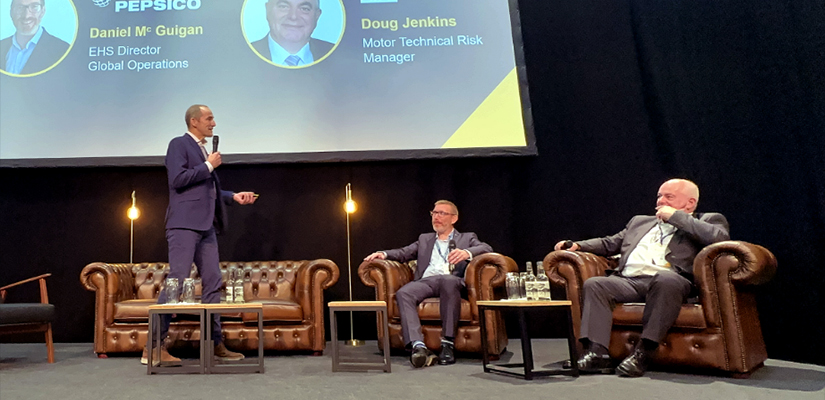The summit covered many aspects of fleet risk, and it was inspiring to hear so many conversations take place that touched on safety, sustainability and security. At Lytx, we believe that video enriches everything that happens out on the road and is the glue that brings these three pillars together.
With a focus on safety, we invited Doug Jenkins, Motor Technical Risk Manager at AXA Insurance and Daniel Mc Guigan, EHS Director Global Operations at PepsiCo International, to join Damian Penney, our VP EMEA, in a discussion about how these two organisations are working together with Lytx to proactively address risk.
Risk is costly, exacting a tremendous toll on reputation, profits and lives every year – with 25,000 road deaths occurring in Europe in 2017 alone. While the total has fallen during the last decade, progress has slowed significantly. To address this, insurers are beginning to change the way they look at risk among commercial drivers, moving beyond the traditional First Notification of Loss (FNOL) approach to looking instead at First Notification of Risk (FNOR). As Damian pointed out during the discussion, traditional telematics report only on incidents that have already happened, without offering insight into what might have led to them. His example, of a driver steering with their knees, using a mobile phone held between shoulder and ear, eating a sandwich and smoking… would not be identified as a risk unless you were using an intelligent video with advanced machine vision and artificial intelligence (MV+AI) technologies.
The transition from reactive to proactive technologies is something that insurers, and the fleets they insure, are now embracing. Taking a reactive approach has worked to a certain degree, but many fleets have not achieved the reduction in risk figures that they would like to see. That’s why more of them are starting to explore the use of predictive technologies which can prevent collisions from occurring in the first place.
For instance, predictive technology can be used to alert administrative personnel if behaviour likely to cause an incident is detected in a cab – be it a fatigue issue, a distraction issue or so on. The driver is notified directly, giving them the opportunity to self-correct before the potential incident occurs.
Insurance companies are seeing a similar opportunity to proactively manage driver behaviour and reduce risk. Traditionally, fleet insurance works by providing a price per vehicle – and this premium will increase whenever a vehicle is involved in a collision. However, next-generation technology is enabling insurers to get ahead of the problem. By informing them about repeated risky driving behaviour, the technology helps them to make smart, data-backed decisions – calculating risk more accurately and adjusting insurance premiums accordingly. We’re terming this FNOR (first notification of risk) and, as opposed to FNOL (first notification of loss) which relies on being reactive, this proactive mindset can deliver significant savings for insurers and the fleets they protect.
The power of strategic partnerships in improving road safety was also discussed during our panel. Closer relationships between third-party technology providers, insurance companies and clients are key in helping more companies to enjoy the benefits of a proactive approach to risk management and will build the case for it to be used across businesses of all sizes.
When it comes to safety and reducing risk, there is a clear need to continue the dialogue and for us all to talk and partner more. This is especially true when you consider the pace at which technology is moving. Our panel discussion showed that by bringing together those responsible for reducing risk – drivers, fleet managers, insurers – we can all work together to save lives and ensure that no commercial driver is ever the cause of a collision.
To find out how to work better with your insurer contact Simon Dicks, Insurance Channel Manager, EMEA, at simon.dicks@lytx.com or LinkedIn.
